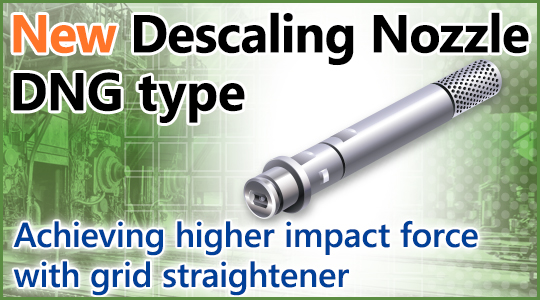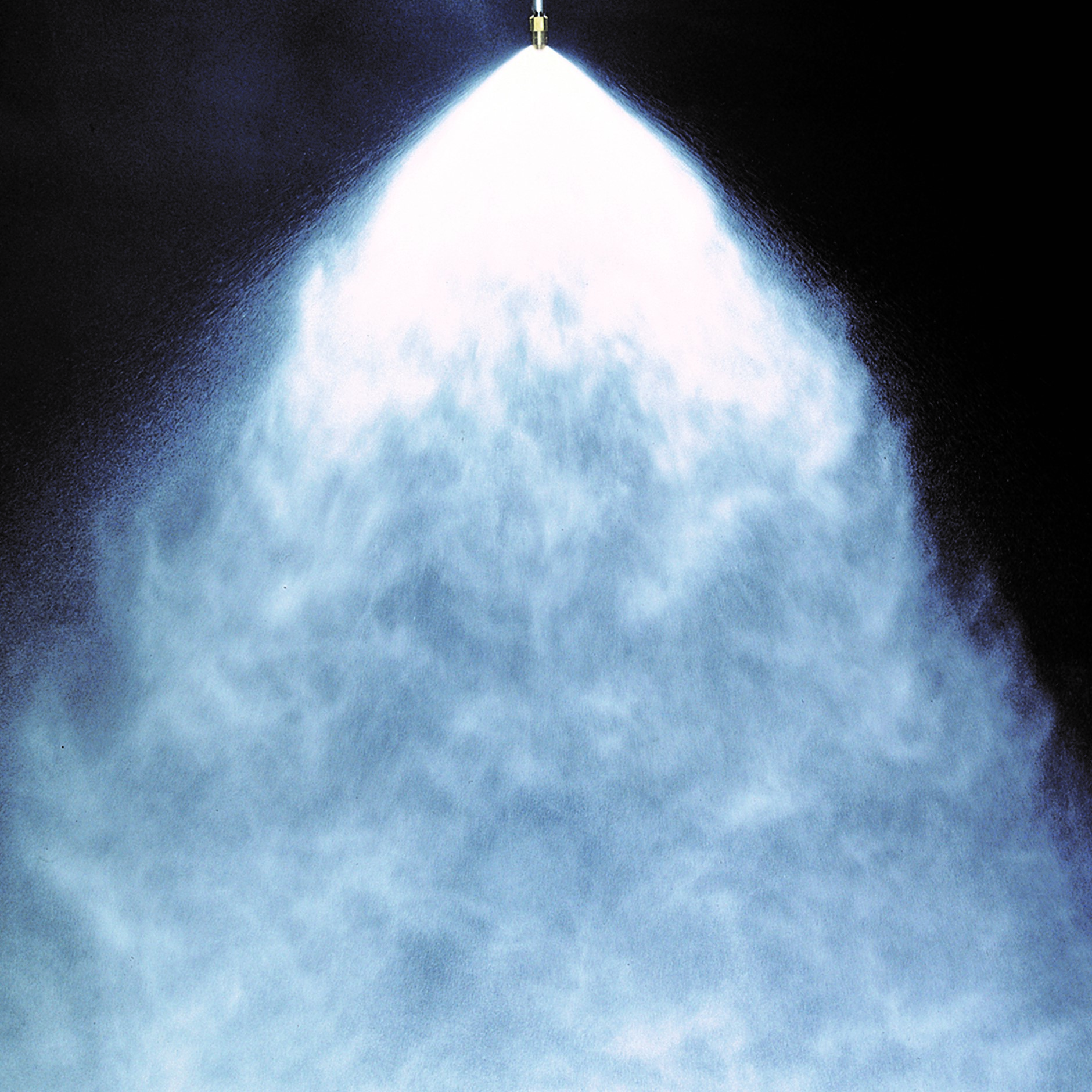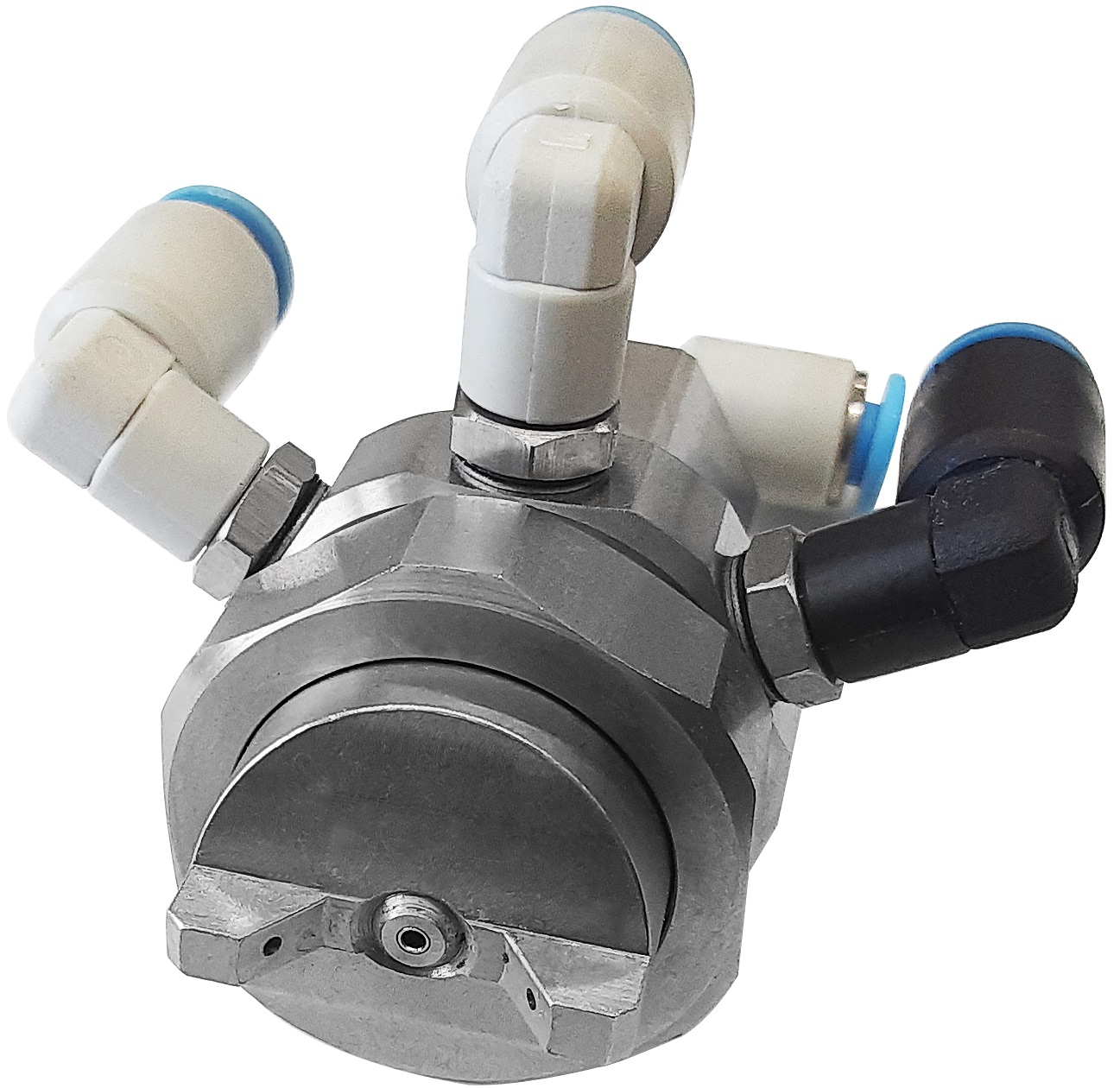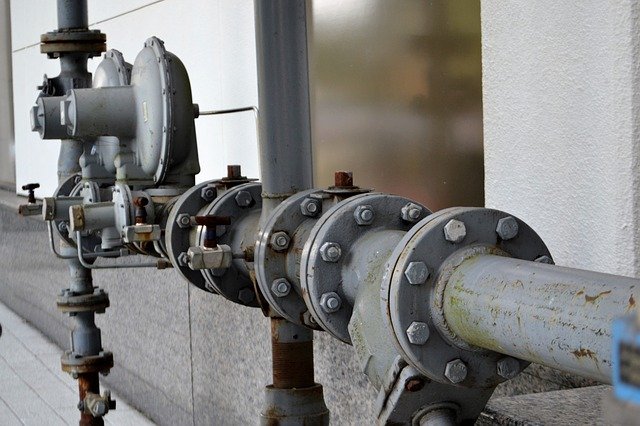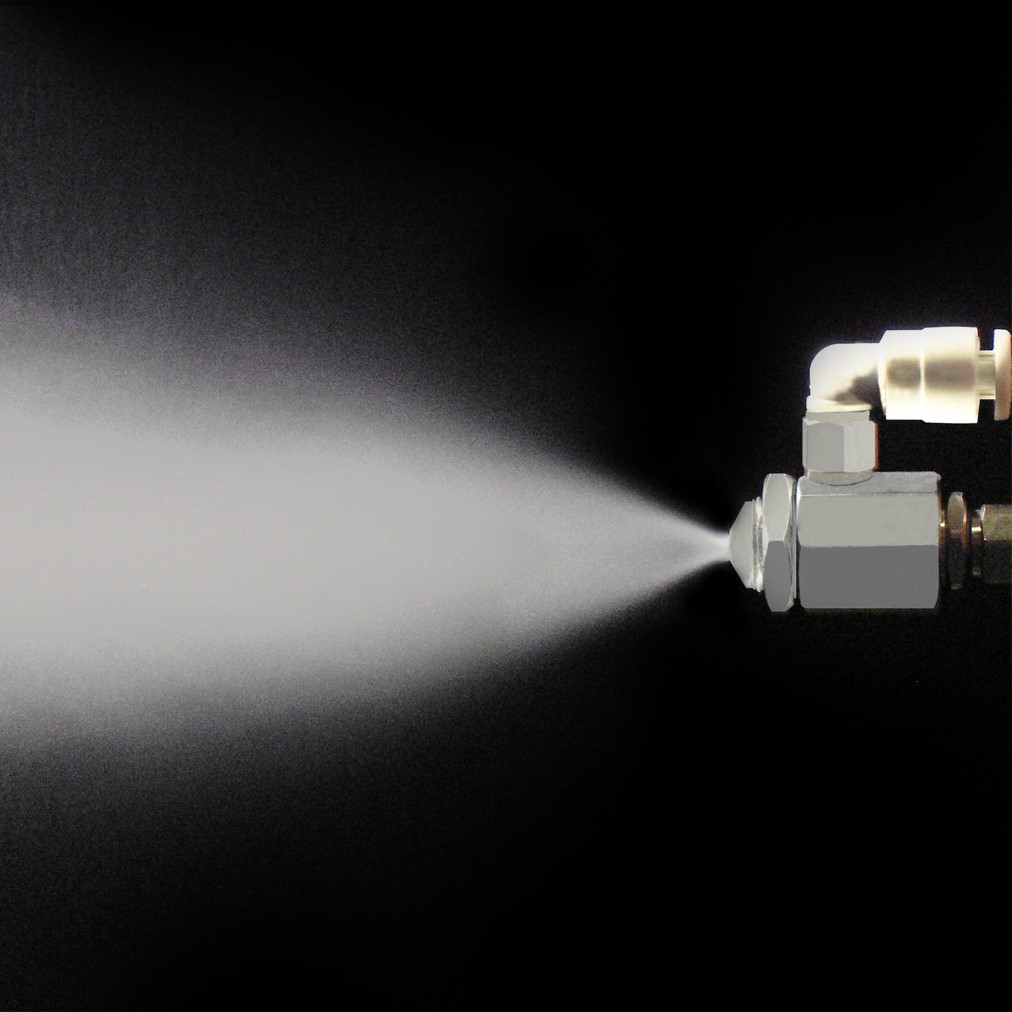Everloy Brand-New Descaling Nozzle
DNG type
Achieving higher impact force with grid straightener.
Excellent balance of filtering and clog-resistance with Multi-hole filter.
EVERLOY contributes to a sustainable society with developing high-quality products.
Features
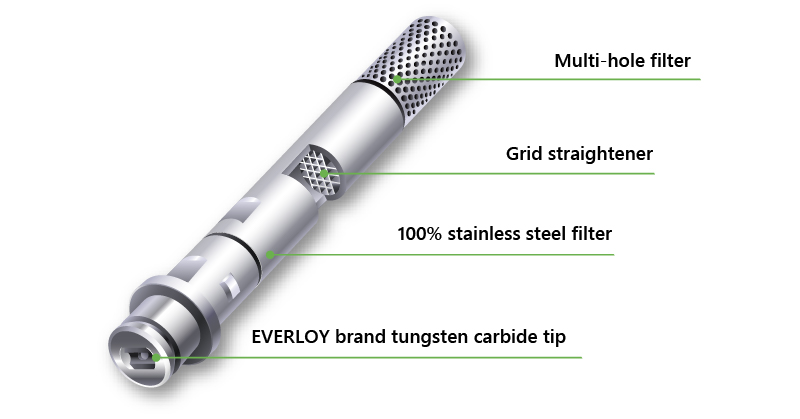
Multi-hole filter
By adopting new-filter design with enlarged opening, excellent balance of filtering and clog-resistance is achieved.
Grid straightener
Original designed grid straightener, based on new straightener concept for descaling nozzle, creates unprecedented high impact force.
100% stainless steel filter
100% stainless steel filter provides higher durability and longer nozzle life than conventional model.
EVERLOY brand tungsten carbide tip
With our in-house manufactured carbide tips, we can provide your ideal spray angles and overlaps.
Performance
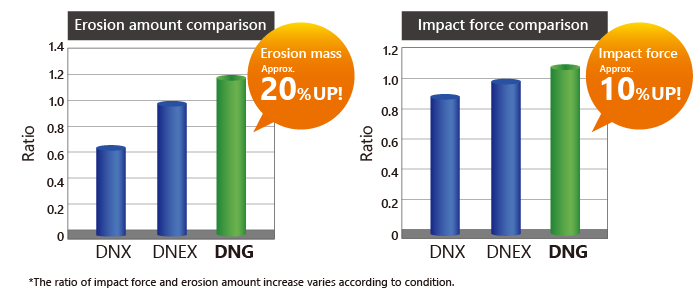
Carbide tip

Benefits of DNG Installation
DNG with the same flow rate as existing nozzles:
Improvement of scale removal efficiency due to higher descaling performance.
DNG with a lower flow rate than existing nozzles:
Reduction of fuel consumption for furnaces, pump power usage, and CO₂ emissions reduction.
Estimation of flow rate reduction effect
With assuming 10% reduction in the flow rate of the descaling nozzle
The estimated annual running cost saving:approx. JPY100 million (USD770,000-/EUR625,000-)
The estimated annual CO2 emission reduction:approx. 11,500 tons

* Please note that the flow rate reduction may vary depending on the specifications of the descaling nozzle.
Please consider carefully before implementation.
* The flow rate reduction effect is calculated based on the following assumptions and does not guarantee actual results.
Assumption
・Annual production amount: 5 million tons
・Flow rate reduction: 10%*
*Assuming that the water volume is reduced in proportion to the increase in impact force.
Estimated benefits
・ 10% reduction in water volume is assumed to result in a 20°C decrease in furnace temperature and a 1kWh/t reduction in power consumption.
・The energy required to heat steel is assumed to be 2 MJ/t・℃
・For the cost calculation, a reduction of 0.1 billion yen per 1 GWh and 0.48 billion yen per 100 TJ is assumed.
Catalog Download


